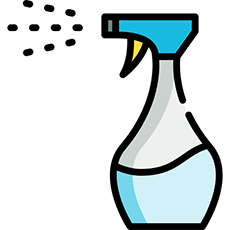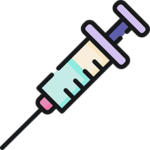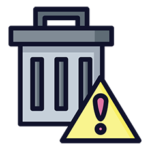Infection prevention and control (IPAC) is an important way to prevent or reduce the risk of transmission of infections to healthcare providers and patients. IPAC involves evidence-based practices and procedures that must be applied consistently in healthcare settings.
Why Is IPAC Important for Community Pharmacies?
- Ensure proper sanitary conditions for drug preparation and storage.
- Support effective and safe administration of substances by injection or inhalation and other pharmacy services (e.g., performing a point-of-care test).
- Support appropriate environment for non-sterile and sterile compounding.
- Maintain a healthy environment for patients.
- Protect pharmacy staff from disease transmission and other threats to health and safety.
Requirements for Pharmacies
Under the Standards of Operations for Pharmacies, which apply to both community and hospital pharmacies, all pharmacies are required to have a program to ensure the regular cleaning of the pharmacy, including all premises, furniture, equipment and appliances, and automated pharmacy systems.
Any pharmacy staff involved in dispensing, compounding or the administration of substances by injection or inhalation must engage in evidence-based infection control practices, including appropriate hand hygiene and wearing suitable protective equipment as needed.
Community pharmacies should:
- Have a policy in place to address IPAC procedures at the pharmacy
- Ensure staff are trained and understand the policy and can demonstrate how to apply it
- Know the resources available from Public Health Ontario and their local public health unit
- Plan for what to do in the case of an IPAC breach and when/how to report to public health
Public health units have been using the IPAC Checklist for Clinical Office Practice to inspect pharmacies. Designated Managers are encouraged to review the checklist for potential gaps in their IPAC policies and procedures.
IPAC Issues Commonly Identified at Community Pharmacies

Lack of established cleaning schedules and/or insufficient cleaning. The pharmacy should not look visibly unclean or have clutter that makes cleaning difficult. Cleaning procedures should occur regularly and be based on best practices.

Vaccination areas that are not maintained appropriately. A consultation room being used for vaccination or other pharmacy services should not be cluttered and should be regularly cleaned. Avoid multiple uses of the room, such as an eating area. Do not store food and drinks in vaccine fridges.

Lack of adherence to PPE use and hygiene techniques. Use proper hygiene and aseptic technique.

Improper waste disposal. Sharps containers should be managed in line with manufacturer guidelines, including ensuring that they are not overfilled. Pharmacies should also have appropriate materials and procedures in place to manage any hazardous waste and bodily fluids.

Furnishings that do not allow for proper cleaning. Furnishings in the pharmacy, especially where vaccinations are being given, should be smooth, non-porous and cleanable. For example, fabric chairs are hard to clean and are often visibly stained.
IPAC Resources for Pharmacy Professionals
Additional resources are available from other government ministries, expert organizations and professional associations.
PROVINCIAL
Ministry of Health and Long Term Care (Public Health Standards)
Public Health Ontario (PHO) and Provincial Infectious Diseases Advisory Committee (PIDAC)
- Best Practices for Environmental Cleaning for Prevention and Control of Infections in All Health Care Settings (April 2018)
- Infection Prevention and Control for Clinical Office Practice (April 2015)
- Best Practices for Hand Hygiene in All Health Care Settings, 4th Edition (April 2014)
FEDERAL
Public Health Agency of Canada (PHAC): Routine Practices and Additional Precautions for Preventing the Transmission of Infection in Healthcare Settings (2013)
Infection Prevention and Control Canada: Infection Prevention and Control (IPAC) Program Standard (Dec 2016)













